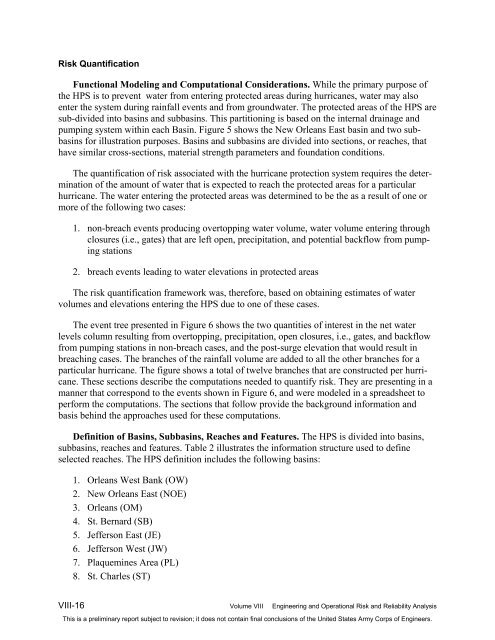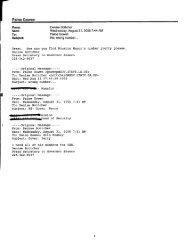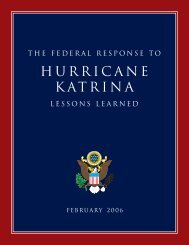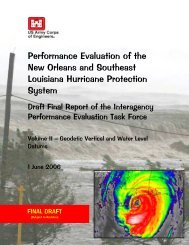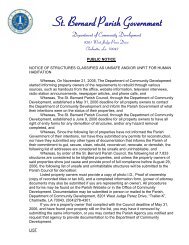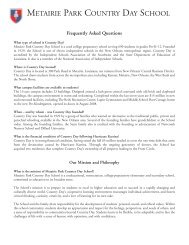IPET Report 3 Vol VIII
IPET Report 3 Vol VIII
IPET Report 3 Vol VIII
Create successful ePaper yourself
Turn your PDF publications into a flip-book with our unique Google optimized e-Paper software.
Risk Quantification<br />
Functional Modeling and Computational Considerations. While the primary purpose of<br />
the HPS is to prevent water from entering protected areas during hurricanes, water may also<br />
enter the system during rainfall events and from groundwater. The protected areas of the HPS are<br />
sub-divided into basins and subbasins. This partitioning is based on the internal drainage and<br />
pumping system within each Basin. Figure 5 shows the New Orleans East basin and two subbasins<br />
for illustration purposes. Basins and subbasins are divided into sections, or reaches, that<br />
have similar cross-sections, material strength parameters and foundation conditions.<br />
The quantification of risk associated with the hurricane protection system requires the determination<br />
of the amount of water that is expected to reach the protected areas for a particular<br />
hurricane. The water entering the protected areas was determined to be the as a result of one or<br />
more of the following two cases:<br />
1. non-breach events producing overtopping water volume, water volume entering through<br />
closures (i.e., gates) that are left open, precipitation, and potential backflow from pumping<br />
stations<br />
2. breach events leading to water elevations in protected areas<br />
The risk quantification framework was, therefore, based on obtaining estimates of water<br />
volumes and elevations entering the HPS due to one of these cases.<br />
The event tree presented in Figure 6 shows the two quantities of interest in the net water<br />
levels column resulting from overtopping, precipitation, open closures, i.e., gates, and backflow<br />
from pumping stations in non-breach cases, and the post-surge elevation that would result in<br />
breaching cases. The branches of the rainfall volume are added to all the other branches for a<br />
particular hurricane. The figure shows a total of twelve branches that are constructed per hurricane.<br />
These sections describe the computations needed to quantify risk. They are presenting in a<br />
manner that correspond to the events shown in Figure 6, and were modeled in a spreadsheet to<br />
perform the computations. The sections that follow provide the background information and<br />
basis behind the approaches used for these computations.<br />
Definition of Basins, Subbasins, Reaches and Features. The HPS is divided into basins,<br />
subbasins, reaches and features. Table 2 illustrates the information structure used to define<br />
selected reaches. The HPS definition includes the following basins:<br />
1. Orleans West Bank (OW)<br />
2. New Orleans East (NOE)<br />
3. Orleans (OM)<br />
4. St. Bernard (SB)<br />
5. Jefferson East (JE)<br />
6. Jefferson West (JW)<br />
7. Plaquemines Area (PL)<br />
8. St. Charles (ST)<br />
<strong>VIII</strong>-16 <strong>Vol</strong>ume <strong>VIII</strong> Engineering and Operational Risk and Reliability Analysis<br />
This is a preliminary report subject to revision; it does not contain final conclusions of the United States Army Corps of Engineers.


